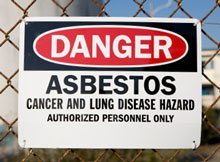30 Years of Global Rise in Mesothelioma Cases

A new study has found that the rate of mesothelioma cases around the world has continued to increase over the past 30 years.
The study was published in Critical Reviews in Oncology and Hematology. The study researchers summarized the most recent worldwide patterns in mesothelioma burden. It is the most recent and thorough study on the annual incidence, mortality, and loss of lifespan for mesothelioma.
Mesothelioma and Asbestos
Mesothelioma is a form of cancer that is caused by exposure to asbestos. Asbestos is a naturally occurring mineral found throughout the world and is toxic to humans.
Many countries have banned or tried to limit the use of asbestos. Unfortunately, asbestos is still used in many places around the world. It is found in thousands of industrial, commercial, construction, automotive, and consumer products.
Mesothelioma Around the World
The study researchers analyzed data from the Global Burden of Disease, Injuries, and Risk Factors study from 2019. This study is the most recent comprehensive dataset currently available. It includes disease statistics from 204 countries and territories.
In 2019, there were an estimated 34,511 cases of mesothelioma and 29,251 deaths caused by the disease. These numbers are double what they were in 1990.
Due to the long latency period of mesothelioma, it is usually diagnosed in elderly patients. It usually takes 35-40 years from exposure to asbestos to development of mesothelioma. This study found fewer cases of mesothelioma in patients under 70 years old and more cases in patients over 80 years old.
The study analysis showed that men were three times more likely to be diagnosed with mesothelioma than women. This held true across all age groups and all countries. This is likely because fewer women work in industrial jobs with exposure to asbestos.
The study also found a higher rate of mesothelioma cases in high-income countries than in low-income countries. This might be because of the greater industrial use of asbestos in high-income countries. Yet, the rates of mesothelioma in high-income countries were beginning to decrease. This may be due to asbestos regulations taking effect in industrialized countries.
The study researchers hope that policymakers can use these results to make better decisions about identifying and treating mesothelioma.
Source
Han Y, Zhang T, Chen H, Yang X. Global magnitude and temporal trend of mesothelioma burden along with the contribution of occupational asbestos exposure in 204 countries and territories from 1990 to 2019: Results from the Global Burden of Disease Study 2019. Crit Rev Oncol Hematol. 2022;179:103821. doi:10.1016/j.critrevonc.2022.103821





